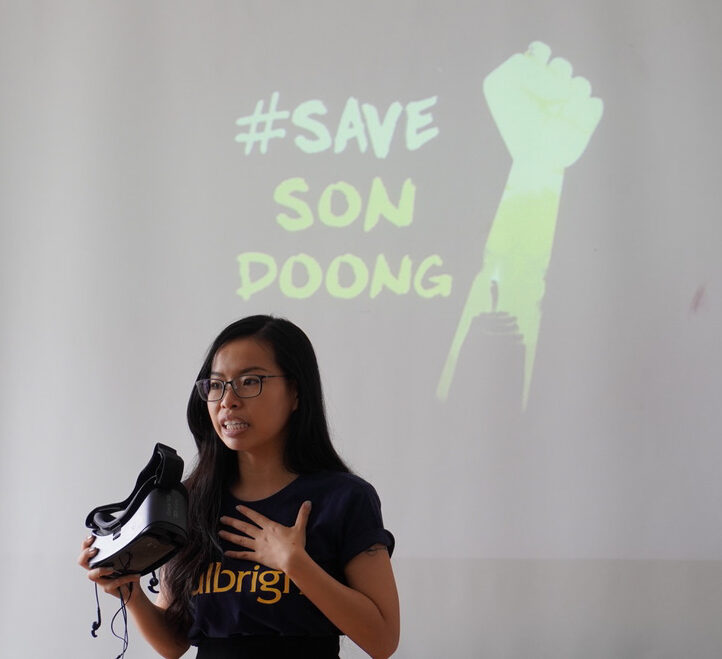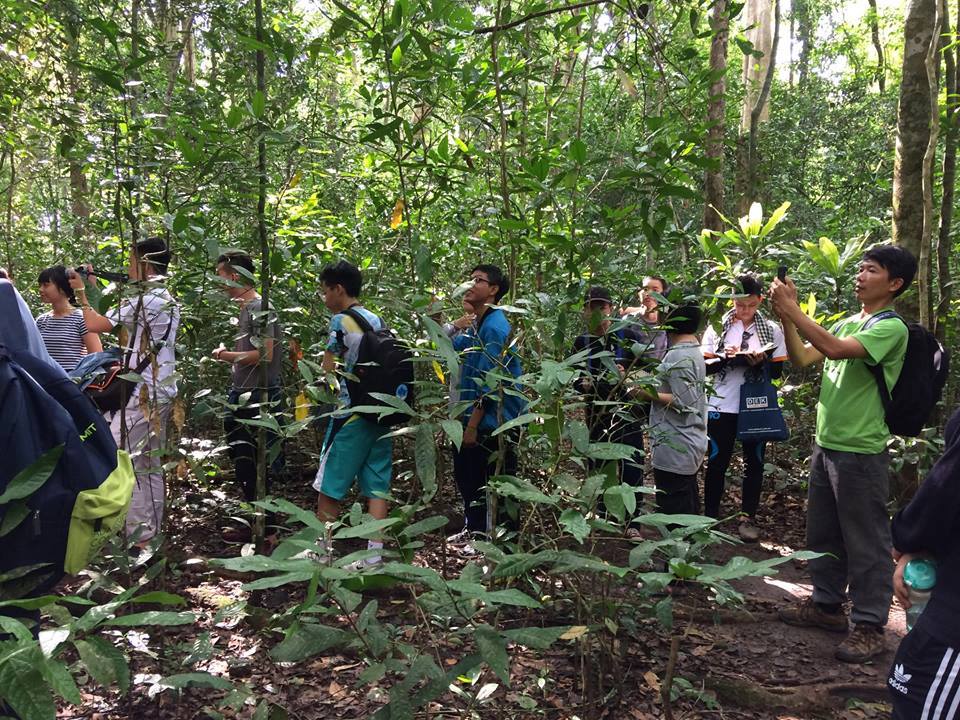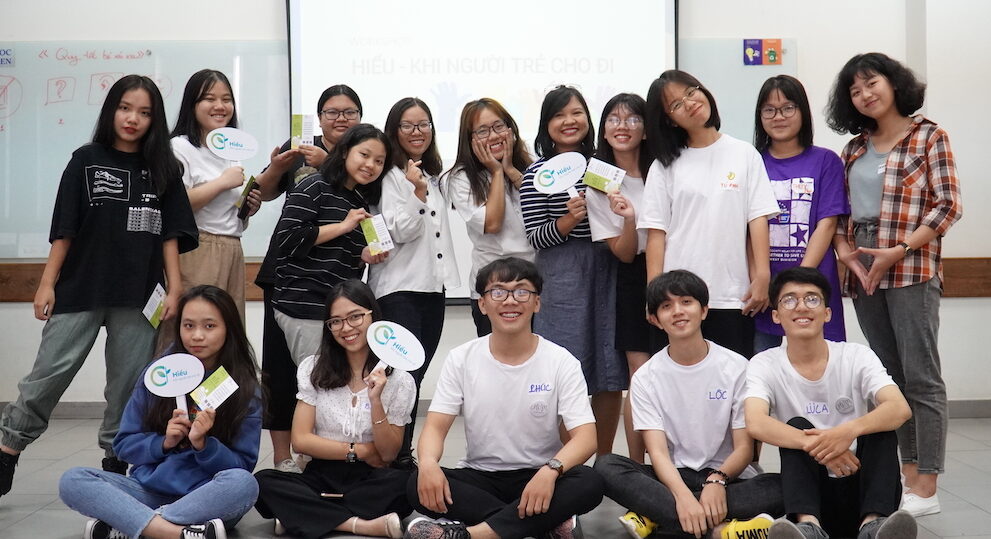By Nguyen Phuong Anh, Development Expert, Vietnam –
Philanthropy has a long history in Vietnamese tradition and culture, and remains part of everyday life among old and young Vietnamese. In recent years, Vietnamese youth have increasingly engaged in philanthropic behaviors, from volunteering to initiating projects solving community challenges. Whilst the philanthropic sector is in its nascent stage, the introduction of philanthropic education to young people is promising in improving the quality of Vietnamese youth giving, and hence enhancing their potential impacts and sustainability.
Philanthropy, meaning love of humankind, is not a popular term by the general public. In Vietnam context, the spirit of giving and helping others is best nuanced by values of reciprocity and mutual support embedded in its centuries-old village culture. For many years, this value is commonly expressed in the forms of sharing food, clothes, money, caring and other necessities in times of need, like natural disasters, or when someone is in a difficult circumstance. This spirit has become part of Vietnamese identity, which can be found in many proverbs and old sayings. Being central to the Vietnamese high sense of community, the spirit of sharing and supporting others has kept the communities stay strong, and helping the country facing several wars, disasters and challenges with resilience and solidarity.
Youth & Philanthropy
Giving among Vietnamese youth, in the context of this article, comprises a variety of philanthropic behaviors and activities, including volunteering, donating to a cause, service learning and community projects. Recent research highlighted the trend of giving money to charities among young people who have not participated in the workforce. This age group is enthusiastic, willing to partake in volunteer activities. In addition to helping others, young people engage in philanthropy to expand their social network, gathering practical experiences and improving skills.
Although Vietnamese are charitable to the less fortunate, most people give to immediate needs or direct relief efforts. As identified in a 2015 research by the Institute for Studies of Society, Economy and Environment, the most popular causes for charitable donations in Vietnam are helping the poor and disaster relief. Givings which aim at making long-term and sustainable impacts, or at solving complex social issues like health care, environment, education, and culture, remain limited. The philanthropic resources have not brought about social justice, or major developmental impacts.
Why Philanthropic Education is Important
Studies have pointed out that philanthropic actions are both altruistic impulses and learned behaviors (Falco et al., 1998; Schervish, 1997). According to a research by Ottoni-Wilhelm et al. (2014), kids and adolescents are more likely to give and volunteer if they are exposed to philanthropic conversations and role modeling of philanthropic actions. Literature and practices in developed giving societies show that kids and youth philanthropy has become an important concept in many different ways and levels. It does not only uplift local communities, but also educate a generation of warm hearted, responsible and caring citizens. Youth flourish from being active in philanthropic initiatives (Rosen and Sedonaen 2001). Children and adolescents serving their community are given the control and assurance that is needed to build their sense of self-worth. It is also important to remember that organizations are benefiting from youth philanthropy, in that young people are future potential donors (Allen 2002). As long as they have proper education, guidance and support from families and local organizations, kids and youth have the abilities to make the world a better place.

A class with role model and environment activist/young philanthropist Le Nguyen Thien Huong, who is founder of the well-known SaveSonDoong campaign.
The Case of Give and Grow
‘Give & Grow’ is a one-of-its-kind program that seeks to inspire Vietnamese youths to become caring and thoughtful citizens who will go on to give and share in responsible manners. Began in 2018 by CHUM, Give and Grow is for youngsters aged 16 – 20 that are interested in furthering their understanding about giving and philanthropy, or nurturing philanthropic values within themselves. Participants will learn how they are connected to the social and environmental issues surrounding them, learning to appreciate the insights and perspectives of others, diversity and social justice, how to give effectively, and skills to identify the needs of beneficiaries, to build trust and examine impacts of their giving. Students will then engage in service learning projects over the course of 6 months, through which they deepen their understanding of social issues they care about and bringing what they have learned into practice while developing skills in communication, teamwork, leadership, project management, and critical thinking, etc.
What sets Give & Grow apart is the combination between the heart and mind when it comes to giving. On the one hand, the program nurtures philanthropic values among participants by utilizing the social emotional learning and mindfulness approach, fostering a culture of compassion, empathy and gratitude in their class and strengthen those values in the participants. On the other hand, it emphasizes the understanding of the causes and the beneficiaries before attempting any giving efforts to ensure dignity and leverage the strength of the people they want to help, and mitigate risks of causing harm resulting from lack of understanding of community needs and culture.
Over the past two batches, initiatives run by the course participants include befriending the elderly at the nursing home, collecting e-waste, stress relief for youth through art therapies, Kindness Coffee which encourages everyday acts of kindness, etc. Students can also opt to volunteer for a cause or research a problem of their choice. One of this year’s projects, Hieu (meaning Understanding) – a peer education on responsible volunteering project – had the opportunity to join the British Council’s Active Citizens program and share with international friends in London this past January. Upon the course completion, some of the projects have got plans to continue their giving and learning journey, with the support of CHUM mentors who are experts in the nonprofit sector.
While these projects may not bring about major changes, the intended impact of this type of education is the growth of young citizens who are more concerned of their local community challenges and willing to contribute with any capacity they have, be it their time, talent or treasure. And above all, they do so with knowhow and understanding that are led by their values and characters – a focus of the 21st century education that is much needed in a country approaching its next phase of development with lots of challenges and potentials like Vietnam.
Driving Own and Local Development
A sustainable Vietnam will depend on local people driving their own developments in a responsible and sustainable way. Will you say more compassionate youth and thoughtful givers can realize that promise?

Taking a class of youth into nature to understand their community and environment.
References:
- Nguyen A. & Doan D. (2015). Giving in Vietnam: A Nascent Third Sector with Potential for Growth.The Palgrave Handbook of Global Philanthropy. pp 473-487
- Public Awareness On Charitable Activities And Fundraising Capacity Of Vietnam Non-governmental Organisations. Institute For Studies Of Society, Economics And Environment. Transport Publishing House, 2015.
- Philanthropy in Vietnam.Vietnam Asia Pacific Economic Center – The Asia Foundation. 2011
- https://www.learningtogive.org/resources/youth-philanthropy
- http://vhnt.org.vn/tin-tuc/tu-lieu-trong-nuoc/30044/tam-the-tham-gia-hoat-dong-tu-thien-cua-phat-tu-viet-nam-hien-nay


2 comments
Great content! Super high-quality! Keep it up! 🙂
A wonderful article that I have shared. How did I
make my child love to read: https://bit.ly/2VxFhqh